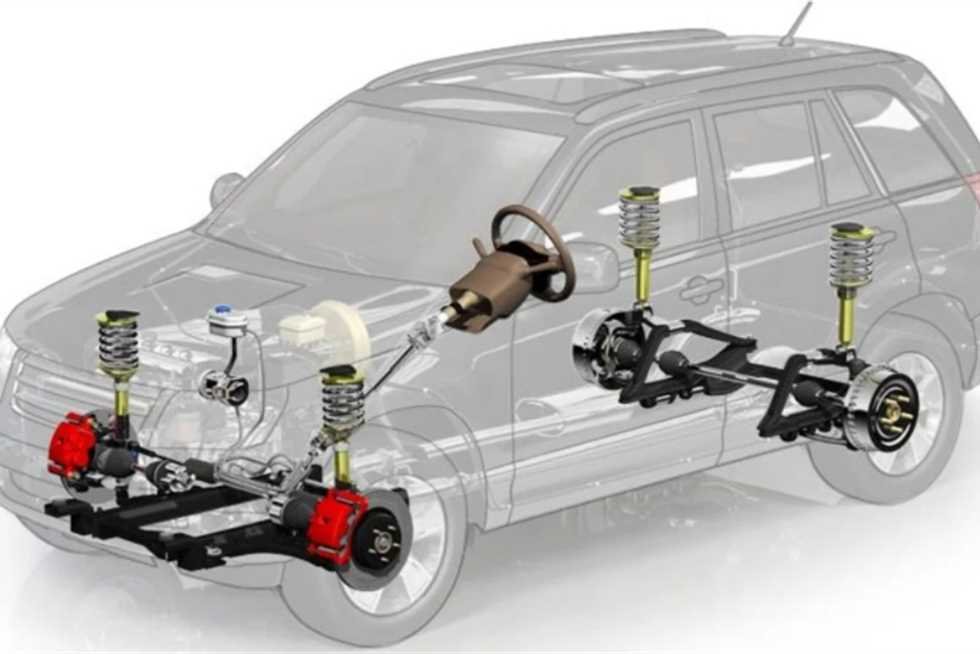- Hours Of Operation:Mon-Friday 8am - 6pm
- Towing Service: Open 24/7

When your car starts pulling to the side, the ride gets super bumpy, or your steering wheel just doesn’t feel right anymore, it’s easy to think it’s no big deal. But these are often signs of steering and suspension issues—your car’s way of warning you that something’s not right and needs attention.
The steering and suspension systems play a huge role in how your car handles and how safe it is to drive. If your car starts acting up, your comfort and control take a hit, and so does your safety. Here’s a guide to the warning signs, what might be causing them, and what to do next.
Your car gives off clues when something’s not right. Here are five clear signs of steering wheel issues that need attention. Catching these early can save you from stress, money, and potential accidents down the road.
If it feels as if you need both your hands and a great deal of strength to turn the steering wheel, there is definitely something wrong. The power steering fluid might be low or the steering pump might be faulty. Regardless, issues like these are a big problem. Controlling your vehicle safely should not require excessive effort
Imagine the scenario where you drive in a straight line yet the car keeps drifting in either direction by itself. It’s both very annoying and quite dangerous. The reason behind that is often alignment issues or worn suspension components. Don’t brush it off. As frustrating as it is, it’s even more dangerous, which is why it needs attention.
Check your tires. Do the inner edges appear more worn than the rest, or does the wear seem uneven? This isn’t solely about requiring new tires; it’s indicative that your suspension may be out of balance. The problem can be much bigger than what meets the eye, so a visit to your tire shop may confirm if there is a deeper issue that is lurking underneath.
If you feel your car shaking even lightly, then it’s probably not your imagination. Your suspension is designed to smooth things out. But when shocks or struts start to go bad, you feel every pothole, crack, or dip. Bumpy rides are more than just annoying; they’re your suspension’s cry for help.
Another telltale sign? Your car nose dives when you brake. This usually means your front shocks aren’t doing their job. The car leans forward way more than it should, which can actually increase your stopping distance. Not great when you need to hit the brakes fast.
So, what’s behind all these symptoms? In most cases, it’s normal wear and tear. Over time, parts like tie rods, ball joints, shocks, and control arms just wear out. Driving on bad roads, hitting curbs, or carrying heavy loads regularly can speed up the damage.
Some problems also come from a lack of maintenance. If you’ve skipped a few service appointments or haven’t checked your alignment in a while, that could be part of the issue too. Either way, these systems are essential, and when they’re not working properly, you’ll feel it.
If anything on this list rings a bell, then it is probably time to take your car for servicing. A trained eye will be able to tell whether the concern is with the steering, the suspension system, or perhaps some other system altogether. If you aren’t sure what the problem is, let the professional car mechanics assess the situation.
Some folks prefer to wait until the ride becomes unbearable, or the car rattles and shakes from side to side uncontrollably. Don’t be that person. While it’s true that the vehicle’s oscillation is highly uncomfortable, it’s also dangerous and usually indicates a more serious problem that requires immediate attention.
Reserving tasks for experts as basic as suspensions and steering repairs comes after forgetting that these aren’t mere tasks akin to changing out the car’s windshield wipers. These systems are complex and critical for safe driving, and should not be taken lightly.
That’s where the professionals come in. Not only do they have the vital tools, the right knowledge, and the technical experience needed for carrying out proper repairs, but are also capable of addressing ‘issues’ you didn’t even realize were problems in the first place. Maintenance advice and even ‘suspension repair tips’ can be easily searched on the internet, but actual repairs are best left to certified technicians.
While a car may not be able to voice its problems, it can communicate them in various ways. Drifting, pulling, shaking, or bouncing can all indicate that the car’s steering and suspension require urgent attention and care. Ignoring them will not make the problems subside.
So if your ride’s feeling a bit weird lately, listen to what it’s trying to tell you. Book a checkup, ask questions, and take your car’s comfort and safety seriously. You’ll be doing yourself and your passengers a big favor.
Event Highlights:
Bring your best car and your A-game!
